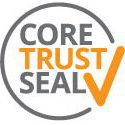Metadata Report for BODC Series Reference Number 1173866
Metadata Summary
Problem Reports
Data Access Policy
Narrative Documents
Project Information
Data Activity or Cruise Information
Fixed Station Information
BODC Quality Flags
SeaDataNet Quality Flags
Metadata Summary
Data Description |
|||||||||||||||||||||||||
|
|||||||||||||||||||||||||
Data Identifiers |
|||||||||||||||||||||||||
|
|||||||||||||||||||||||||
Time Co-ordinates(UT) |
|||||||||||||||||||||||||
|
|||||||||||||||||||||||||
Spatial Co-ordinates | |||||||||||||||||||||||||
|
|||||||||||||||||||||||||
Parameters |
|||||||||||||||||||||||||
|
|||||||||||||||||||||||||
|
|||||||||||||||||||||||||
Problem Reports
No Problem Report Found in the Database
Quality report for James Clark Ross cruise JR20081228 (JR188) XBT data
All casts were screened and M flags applied to cycles where suspect data were identified. The following series/cycles were flagged:
| Series reference | Cycles | Comments |
| 51000 | 648-2904 | Constant/suspect values |
| 51100 | 873-2904 | Constant/suspect values |
| 51200 | 570-2905 | Constant/suspect values |
| 51900 | 615-2903 | Constant/suspect values |
| 52000 | 416-2904 | Constant/suspect values |
| 52100 | all cycles flagged | values are suspect |
| 52300 | 1076-2904 | Constant/suspect values |
| 52400 | 564-2904 | Constant/suspect values |
| 52500 | 588-2904 | Constant/suspect values |
| 52600 | 569-2905 | Constant/suspect values |
| 52700 | 556-2905 | Constant/suspect values |
| 53400 | 580-2905 | Constant/suspect values |
| 53500 | 175-2904 | Constant/suspect values |
Data Access Policy
Open Data supplied by Natural Environment Research Council (NERC)
You must always use the following attribution statement to acknowledge the source of the information: "Contains data supplied by Natural Environment Research Council."
Narrative Documents
Instrument description
Lockheed Martin Sippican T-5 XBT Probe
The Expendable Bathythermograph system uses a sea water ground. As soon as an electrode within the nose of the expendable probe makes contact with the water, the circuit is complete and temperature or sound velocity data can be telemetered to the ship-board data processing equipment. The T-5 XBT Probe can be used within a maximum depth of 1830 m, with a rated ship speed of 6 knots and has a vertical resolution of 65 cm.
Manufacturer specifications can be found here
BODC processing document for XBT data
BODC Processing
The files were sent to BODC in .EDF format, which can be opened with a text editor. No processing was carried out at BODC.
The files were converted to BODC internal format (QXF) using BODC established procedures. There was no need to apply unit conversions as the originator's units were equivalent to the units stored on BODC's vocabulary dictionary.
The following table shows how the variables within the originator's files were mapped to appropriate BODC parameter codes:
| Originator's Parameter Name | Units | Description | BODC Parameter Code | Units |
|---|---|---|---|---|
| Depth | m | Depth below surface of the water body by computation from probe free-fall time using unspecified algorithm | DEPHCV01 | m |
| Temperature | °C | Temperature of the water body by expendable bathythermograph (XBT) | TEMPET01 | °C |
| Sound Velocity | m s-1 | Sound velocity in the water body by computation from temperature and salinity by unspecified algorithm | SVELCV01 | m s-1 |
Reformatted XBT data were visualised using the in-house graphical editor EDSERPLO. Quality control flags were applied to data as necessary.
Originator's processing document for JR20081228 (JR188) XBT data
A total of 30 expendable bathymetry thermographs (XBT) were launched during cruise JR20081228 (JR188) whilst the ship was sailing. The speed was reduced from 10 to 6 knots to allow for data acquisition. The data were transferred to a PC via a USB interface that provided the communication with the XBT launcher.
The data were were obtained with T5 Sippican probes and were not processed or calibrated by the originator.
Project Information
BAS Long Term Monitoring and Survey
Introduction
The Long Term Monitoring and Survey project (LTMS) has been running since the British Antarctic Survey (BAS) was created. This project is one of the BAS core projects, with several groups of scientists collecting various types of data e.g biological, geological, atmospheric, among others.
Data collection is achievable through a wide scope of instruments and platforms, e.g. the Antarctic research stations, autonomous instrument platforms deployed on or from BAS research ships, BAS aircrafts, satellite remote sensing and others.
Scientific Objectives
This project was implemented in order to measure change and variability in the Earth system. Its long term duration allows for the monitoring of processes that could be missed in shorter term studies and experiments. The data collected is also used to check and improve the reliability of models used to stimulate and predict the behavior of the Earth system.
The main objectives are:
- Topographic survey
- Geosciences survey
- Biological survey and monitoring
- Atmospheric and oceanographic monitoring
Data Availability
The data sets obtained through this project are available to the academic community.
Global Science in an Antarctic Context (GSAC)
Introduction
GSAC is the British Antarctic Survey research programme from 2005 to 2009, it encompasses 8 programmes, including 18 projects as well as long-term monitoring and survey activities.
This programme was created to fulfill BAS vision of becoming, by 2012, the leading international centre making use of the of the Antarctic and the Southern Ocean. This research programme consists of an integrated set of inter-disciplinary research, monitoring and survey activities designed to extract new knowledge from the Antarctic, provide information to policy makers and benefit society in general.
GSAC supports the Natural Environment Research Council (NERC) strategy Science for a Sustainable Future and contributes to other programmes such as the World Climate Research programme, the International Geosphere-Biosphere Programme, the Convention on Biological Diversity, the Scientific Committee for Antarctic Research and the International Polar Year 2007-2009.
The programme's components are highly interconnected and its content makes full use of BAS Antarctic infrastructure and builds on previous BAS research, survey and monitoring, whilst also exploring new areas.
The programmes contributing to GSAC are:
- ACES- Antarctic Climate and the Earth System
- BIOFLAME- Biodiversity, Function, limits and Adaptation from Molecules to Ecosystems
- CACHE- Climate and Chemistry: Forcings, Feedbacks and Phasings in the Earth System
- COMPLEXITY- Natural Complexity Programme
- DISCOVERY 2010- Integrating Southern Ocean Ecosystems into the Earth System
- GEACEP- Greenhouse to Ice-House Evolution of the Antarctic Cryosphere and Paleoenvironment
- GRADES- Glacial Retreat in Antarctica and Deglatiation of the Earth System
- SEC- Sun Earth Connections
- LTMS- Long Term Monitoring and Survey
More detail is provided in each programme document.
Data Activity or Cruise Information
Cruise
| Cruise Name | JR20081224 (JR188) |
| Departure Date | 2008-12-24 |
| Arrival Date | 2009-01-06 |
| Principal Scientist(s) | Claire Waluda (British Antarctic Survey) |
| Ship | RRS James Clark Ross |
Complete Cruise Metadata Report is available here
Fixed Station Information
No Fixed Station Information held for the Series
BODC Quality Control Flags
The following single character qualifying flags may be associated with one or more individual parameters with a data cycle:
| Flag | Description |
|---|---|
| Blank | Unqualified |
| < | Below detection limit |
| > | In excess of quoted value |
| A | Taxonomic flag for affinis (aff.) |
| B | Beginning of CTD Down/Up Cast |
| C | Taxonomic flag for confer (cf.) |
| D | Thermometric depth |
| E | End of CTD Down/Up Cast |
| G | Non-taxonomic biological characteristic uncertainty |
| H | Extrapolated value |
| I | Taxonomic flag for single species (sp.) |
| K | Improbable value - unknown quality control source |
| L | Improbable value - originator's quality control |
| M | Improbable value - BODC quality control |
| N | Null value |
| O | Improbable value - user quality control |
| P | Trace/calm |
| Q | Indeterminate |
| R | Replacement value |
| S | Estimated value |
| T | Interpolated value |
| U | Uncalibrated |
| W | Control value |
| X | Excessive difference |
SeaDataNet Quality Control Flags
The following single character qualifying flags may be associated with one or more individual parameters with a data cycle:
| Flag | Description |
|---|---|
| 0 | no quality control |
| 1 | good value |
| 2 | probably good value |
| 3 | probably bad value |
| 4 | bad value |
| 5 | changed value |
| 6 | value below detection |
| 7 | value in excess |
| 8 | interpolated value |
| 9 | missing value |
| A | value phenomenon uncertain |
| B | nominal value |
| Q | value below limit of quantification |

